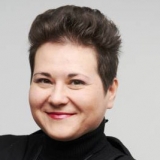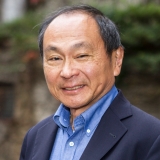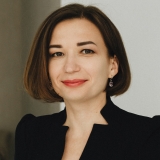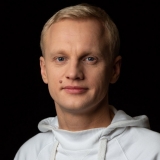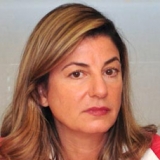Traps of Russian avant-garde. Response to Financial Times review of In the Eye of the Storm exhibition
The Bolshevik coup in Russia in 1917 is not a milestone for the Ukrainian avant-garde. Tetiana Filevska, an art historian and creative director of the Ukrainian Institute, wrote a letter to the Financial Times regarding this issue.
It was her response to an article by the Financial Times dedicated to the exhibition of the Ukrainian avant-garde In the Eye of the Storm at the Royal Academy of Arts in London. UP.Culture, Ukrainska Pravda's holding company, has the opportunity to publish the letter.
I am writing to you in regards to the review Vivid utopias and bitter failure in the Royal Academy’s Ukrainian Modernism show — by Jackie Wullschläger from June 29 2024. It is definitely great that a review on Ukrainian art exhibition made it to the FT. It’s one of very few articles about culture of Ukraine in one of the world’s leading media. And this effort to learn more and understand better can’t be more welcomed and appreciated. Especially considering that Ukrainian culture is one of the targets for russian army in their brutal war (which was recognised as part of the genocidal aggression recently by PACE and OSCE) spreading a word about it is supporting Ukraine’s brave resistance.

Surely it is always challenging to work with a new and relatively unknown topic as Ukrainian culture and it is understood that a lot of effort is needed to undermine pitfalls and fight stereotypes imposed by a Moscow-centric view of the region (and russian interpretations of history in the exhibitions like Revolution: Russian Art 1917-1932 in the Royal Academy) like a few I would like to draw your attention from the mentioned review.
1. The Russian Revolution trap
The author thinks that the show exists to illustrate how Russian revolution inspired and defined all artists of the former empire.
And there are several things to disagree with: the notion of Russian revolution is incorrect if we are talking about the Bolshevick’s revolt in 1917 and further occupation of a number of independent states including Ukraine that emerged after the collapse of the Russian empire. During 1917-1921 Ukrainian National Republic was created out of a free will of Ukrainians who finally emancipated from a centuries old imperial colonization.
But even for artists known as avant-garde in Moscow and St Petersburg the events of 1917 and on did not have a crucial impact. All the major innovations in art happened years before.
Even Malevich’s Black Square was exhibited in 1915 and that was one of the latest discoveries.
The bolsheviks did use the potential of avant-garde art to communicate with the masses. And Marxist-Leninist ideology demanded that art was dependent from the political events (never the opposite).

This connection of so-called revolution with avant-garde art was promoted recently by russian federation’s public diplomacy including a number of exhibitions in major museums globally including the RA generously supported by the oil-and-gas funding coming from the state sources or putin’s closest allies.
2. The Russian identity trap
Looks like the author’s second task is to tie Ukrainian artists to russia ignoring any other connections they had. Naming the artists presented at the show we are told that apart from being connected to Ukraine they all worked in "Moscow, St Petersburg and elsewhere" meaning Paris, Munich, New York, Berlin, Warsaw, Istanbul etc.
Why is naming two russian cities more important than a dozen of European and USA cities?For many artists russia didn’t have any role whatsoever: like Boichuk who made his career in Paris or Bohomazov, Yermylov and Archypenko who studied for one year in Moscow and spent the rest of their life in Kyiv and Kharkiv or in Europe/USA.

There is no special need to emphasize russian connections.
But it is worth mentioning that in the russian empire many professional artist had no choice where to study or work as the empire didn’t allow higher art education in its provinces including Ukraine.
It was a way to suck out talents and also keep the intentions for sovereignty under control because local institutions allow to grow local agency. That is why artist like Malevich had to go to Moscow/Petersburg or to Europe instead of Kyiv if they wanted to get educated in art.
3. The Russian avant-garde trap.
The author refers to the term Russian avant-garde and assumes that it included artists from right across the former russian empire and appropriates artists of different cultures including Ukraine under the umbrella of russian. If the term refers to the phenomenon from the whole empire it would be more correct to call it imperial or Russian-imperial avant-garde.
This exhibition actually exists among other things to critically look at this problematic notion so little questioned in the western academia and art community and it is a great step forward in this discussion that a joint Ukrainian and UK curatorial group brings it to the Royal Academy.
Even if we negotiate terms Ukrainian avant-garde vs Avant-garde in Ukraine we should remember that Ukrainian artists of the time chose Ukrainian as the language of literature and theatre, and admired a motto by Mykola Khvyliovyi "Away from Moscow!"

4. The Ignorance trap
A few facts stick out. Chagal has no connection to the exhibition topic and to Ukrainian art in general. He is quoted for no reason.
Malevich predated his late canvas created in late 1920’s because he claimed the history of easel painting was over and needed to recreated his artworks for the personal exhibition in 1929 while most of his early works were stuck in Berlin. Charlotte Douglas made a research about it.
Boichuk was executed for being national bourgeois first of all not a formalist. Exter lived 35 years of her life in Kyiv.
There are different reasons that up until now Ukrainian culture was little known to the world: colonial position in the russian empire and the ussr, continuous russian policy to destroy and diminish Ukrainian culture, appropriation of Ukrainian heritage and talents, russian monopoly on representation of the region and last but not least russian disinformation.
Spotlighting art from Ukraine is an important act of support and solidarity as well as a tool to inspect own collections both public and private if among items labeled as russian there are actually Ukrainian cultural objects.

There is a lot Ukrainian culture can give to the world and add to the global agenda. Despite all the challenges and destruction it survived and continues producing senses and unite creatives. There are answers to European and global issues that can be found. There are solutions that can be reached. There are puzzles that can be assembled. If you unveil the knowledge and experience, and senses that Ukrainian culture has to share. While everything russian will remain under strict sanctions for the decades to come.
This conversation about Ukrainian culture has only begun. Hopefully this trend will develop into more regular coverage and even hopefully into collaboration with Ukrainian authors and local artistic community.
